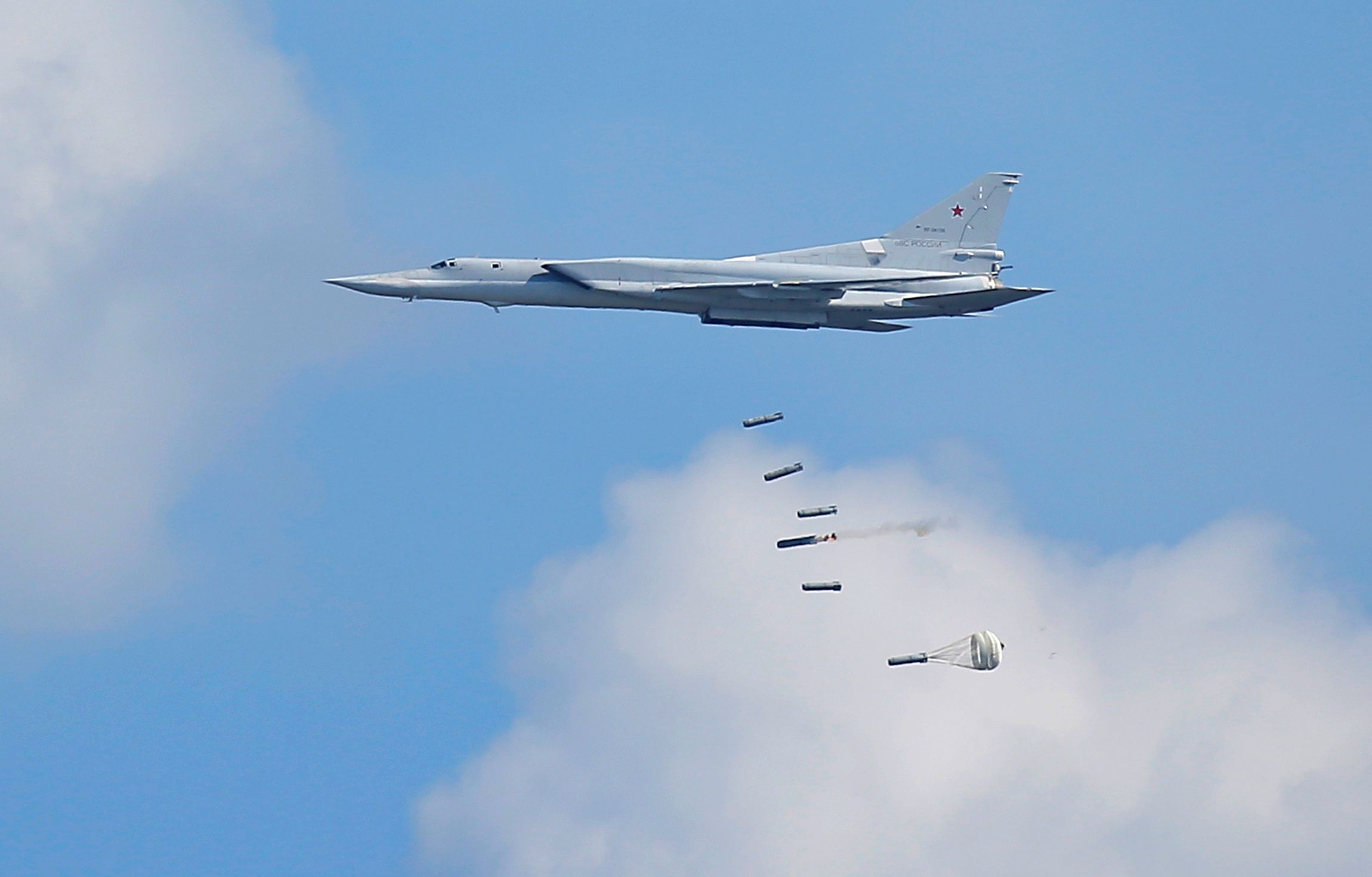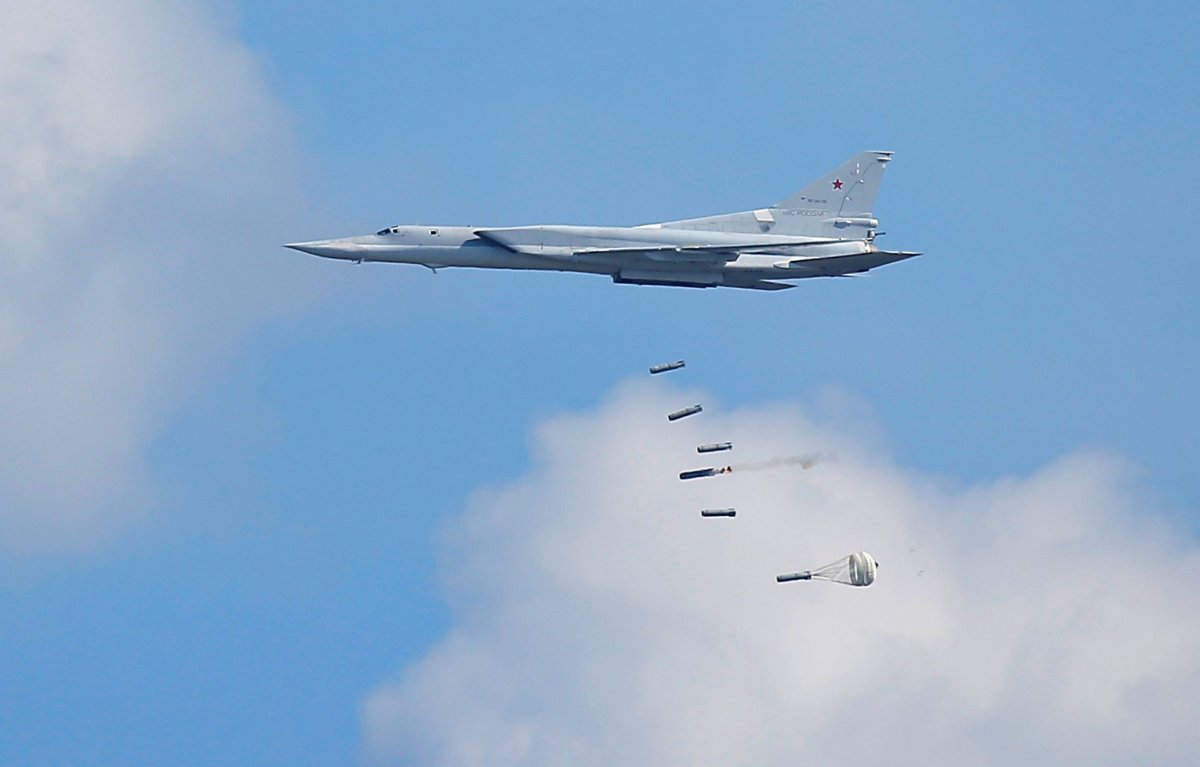
Russia has completed designs to upgrade one of its most powerful aircraft, giving it brand-new hardware and the ability to carry advanced, precision cruise missiles that travel hundreds of miles at five times the speed of sound.
As six Tupolev Tu-22M3 supersonic long-range bombers blasted the very last positions held by the Islamic State militant group (ISIS) in Syria, where an alliance of Russia, Iran and the Syrian government declared victory over the jihadis last week, Russia's defense ministry told state media Friday that military designers had finalized plans to fit the warplane with "modern long-range precision weapons" among other modifications. The remodeling was the latest in Russian President Vladimir Putin's rejuvenation of the country's armed forces.
Related: Russia Military's New Nuclear Warplane Will Fly Soon and That's 'Good News' for Putin
"The development of the documentation for the Tu-22M3M has been completed and work is currently underway at the Kazan Aircraft Enterprise to prepare the production facilities for the repair and modernization of the bombers that are in service in the operational units of Russia's Aerospace Force," a ministry source told the state-run Tass Russian News Agency.
"The first heavy upgrade of these planes since the time of their development will begin from next year," the source added.

The original Tupolev TU-22, called "Blinder" by Western military alliance NATO, was introduced in 1962 as the Soviet Union's first bomber. While the initial model saw limited production and a lot of defects, it was subject to a complete makeover and released in the 1970s as the Tupolev Tu-22M, nicknamed "Backfire" by NATO. The Tu-22M retained the Kh-22 cruise missiles of its predecessor, but was essentially an entirely new aircraft and saw extensive use over the decades as new variants appeared, one of the latest being the Tu-22M3.
The newly completed Tu-22M3M design would reportedly include new electronics, including navigation and sighting systems, as well as the same powerful Kuznetsov NK-32-02 motor being fitted to the new Tupolev Tu-160M2 heavy strategic bomber, which was unveiled Thursday. As for firepower, the Tu-22M3M would be able to carry two Kh-32 cruise missiles, a nuclear-capable weapon that can soar 130,000 feet in the air before striking targets over 620 miles away, United Press International reported.
About 30 planes were expected to be converted out of the Russian Air Force's 68-plane fleet of Tu-22M3s. The Tu-22M3, along with various other Russian bombers, fighters and multi-purpose aircraft, played a crucial role in assisting Syrian President Bashar al-Assad and his armed forces in defeating ISIS and rebel groups attempting to overthrow him since 2011.
Дальние бомбардировщики Ту-22М3 нанесли авиационный удар по объектам террористов ИГИЛ в #Сирия https://t.co/1HqeYxgVcC pic.twitter.com/ZMhkNEtQE3
— Минобороны России (@mod_russia) November 17, 2017
The Russian Defense Ministry said Thursday that six Tu-22M3 bombers left Russia and crossed Iranian and Iraqi airspace to reach eastern Syria, where they were escorted by Sukhoi Su-30 fighters that departed the Russia-administered Hmeymim air base near the city of Latakia on Syria's west coast. The aircraft carried out "a massive airstrike" near the eastern Syrian town of Al-Bukamal that destroyed ISIS personnel, equipment and weapons, according to Tass.
The U.S.-led Combination Joint Task Force - Operation Inherent Resolve said Thursday it also launched airstrikes Tuesday and Wednesday in the eastern province of Deir Ezzor in Syria as well as in western Iraq.
The Syrian military, backed by Russia, Iran and Iraqi forces, declared victory in the last ISIS stronghold of Al-Bukamal last week, but continues to face fierce resistance in the border town. These developments, however, along with parallel advances by the U.S.-backed Iraqi military and allied majority-Shiite Muslims supported by Iran have rapidly narrowed what remained of ISIS's self-proclaimed caliphate that once spanned across about half of Iraq and Syria.
Uncommon Knowledge
Newsweek is committed to challenging conventional wisdom and finding connections in the search for common ground.
Newsweek is committed to challenging conventional wisdom and finding connections in the search for common ground.
About the writer
Based in his hometown of Staten Island, New York City, Tom O'Connor is an award-winning Senior Writer of Foreign Policy ... Read more
To read how Newsweek uses AI as a newsroom tool, Click here.








